There are many reasons why a company or small business would want to start a blog – brand reinforcement, customer engagement, positioning yourself as a thought leader in the industry. All of that is excellent, and are actually points I push on clients. But today I’d like to talk about the SEO (search engine optimization) value of small business blogging and how to optimize for organic traffic to your site.
Most companies and small business owners know what a blog is. In my experience, most fall into one of these categories…
1) No Blog – You know about blogs, but you aren’t sure how effective it could be as a marketing tool, so you haven’t tried it
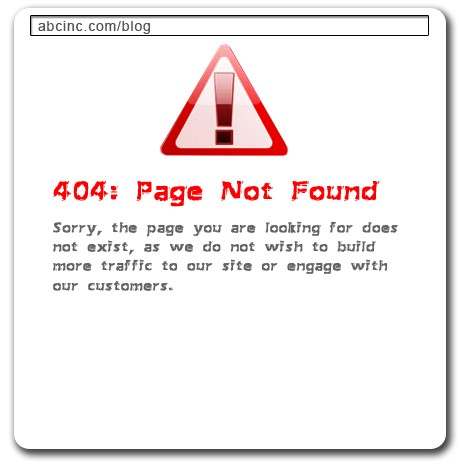
2) Old Abandoned Blog – You did have a blog a while back, wrote some stuff, nothing happened, so you stopped

3) Bad Blog – You’ve created a blog that’s either too “salesy”, too boring, or some other common mistake made on business blogs. These blogs usually don’t manifest into anything substantial …
How Blogs Can Increase Search Traffic
More Pages in the Search Engines
Each new quality page you create for your domain is another chance to bring in search engine traffic. If you and your team of writers create a lot of informative, unique, compelling content on a regular basis, then you have many great pieces of content for people to land on from the search engines. This doesn’t mean create millions of pages though. Focus on quality first, quantity second.
If you write about grilling, write a 10 Reasons Why Grilling with Propane is Superior piece that is so good, Hank Hill would shed a tear.

Increased Rankings of Current Pages
Having a robust, quality blog can help all the other pages on your site rank through various means – linking, keyword reinforcement, freshness, and social sharing, to name a few.
1) Internal Linking – Adding links in blog posts that point to other sections of your website can help build the rankings of those pages.
2) Link-Building – Building quality content can often lead to people linking to your posts from their own websites, which will increase the authority and ranking potential of your entire site. Building links can be extremely valuable to your SEO efforts.
3) Keyword Reinforcement – By writing about topics related to the services you offer or products you sell, you are reinforcing the context of your site, thus increasing the relevancy for whatever it is you’re targeting.
4) Freshness – Your site as a whole will benefit by steadily creating new and fresh content. Here is a great article on how freshness can effect search rankings.
5) Social – Blogs work great for Social Media. People like to share great content on the social media channels they frequent. These social shares can increase your referral traffic as well as your organic traffic.
Creating your Blog for SEO
Objective & Goals
Before you jump right in, it’s important to establish specific, measurable goals – something more than simply increasing organic traffic. You’ll want specific KPIs (key performance indicators) that will allow you to visualize your progress in a more defined manner. There are many KPIs (aside from visits to your blog and site) to consider – newsletter signups, comments, blog subscribers, social shares, the list goes on. The thing is, all of these effect the SEO success of your small business blog!
After you’ve established your goals, then you can have your blog designed based on those objectives.
Design
The blogging platform I recommend is WordPress – and make sure you create a self-hosted blog. Wordpress is fairly simple to use, there are countless plugins to accomplish pretty much anything you like, and search engines love it.
Design your blog based on the objectives and goals you’ve set. For instance, if you are looking to increase blog subscribers – who wouldn’t – make sure you have a subscribe section that is both visible, compelling and simple to use.
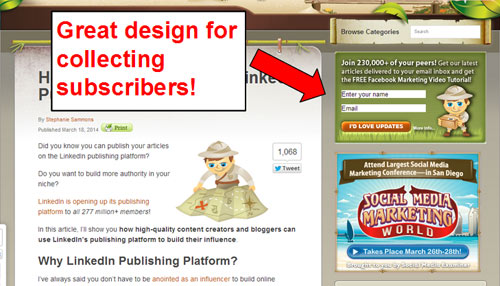
Here is a great example from socialmediaexaminer.com of a compelling subscribe section (they’re awesome, you should check them out)
Also, don’t forget to set up a social sharing plugin of some kind to make it easy for people to like and share your posts – here’s a recent article from Small Business Trends on the top social media plugins for sharing.
Tracking
In order to measure the KPI’s we’ve set, we’ll want to track the goals in Google Analytics. For this, you’ll need to set up your Goal Conversions in your Analytics account.
Two of the most common methods for goal conversion tracking include tracking the page that a visitor lands on (like a Thank You for Subscribing page) and tracking a click (like someone clicking Submit in a form).
Tracking goals allow you to measure your progress over time as well as discover which type of content is leading to more conversions.
Click here to see how to set up your Goal Conversions
Content Strategy
Target Audience
Before even thinking of what to write, it’s important to establish who your target audience is. Are they experts or beginners? Are they business owners or consumers? Are they male or female? Young or old? International or local? Do they want to be educated or entertained?
Good article from Crazy Egg on finding your target audience. Here’s a quote I liked…
Try not to think of keeping a targeted profile as excluding anyone, but rather keeping your messaging focused on the people who will make the most impact. Trust that “everyone else” will follow once you made an impression with your core market.
This part often gets overlooked, and I’m not really sure why. A lot of time and resources are going to be put in the content strategy, so make sure you spend some time initially researching that target audience. This will give you the most mileage out of your blog and the most SEO value.
Getting that target audience right is going to lead to more links, more social shares, and all of that great SEO stuff.
For instance, if we’re starting a blog about grilling, we may want a target audience that is male, age 20-60, consumers looking for grilling tips, and may or may not be a NASCAR fan.

NASCAR Enthusiast – potentially enjoys grilling
Create Topics
Now that you have your target audience, think of broad topics to cover, rather than specific posts to write. This is going to help out with SEO tremendously later on.
Broad topic examples: How to Grill, Grilling Recipes, Gas Grill Reviews
Creating these overarching topics will help maintain content focus and help increase your SEO by leveraging a solid site architecture.
You can find broad topics by looking at competitor blogs, forums for your niche, social media channels, other related sites – soon you’ll start to see the same types of questions and discussions surrounding some core topics.
Build your Team
This is where I like to cast a huge net. Gather everyone you possibly can within the organization that knows the industry and is willing to add content to the blog. You’ll be surprised at how great some are at writing content and how horrible others are. If you start out with 10 people willing to contribute, you’ll probably only end up with around 5 that have the writing capability, industry expertise, availability, and willingness to participate on a regular basis.
Schedule your Posts
Putting your team of writers on a calendar that is shared by all will hold people accountable. A free, easy-to-use, and shareable application is the Google Calendar. That’s what I recommend in most cases.
Make sure you spread your team of writers out evenly over the calendar. A good idea might be to schedule each person for once every couple of weeks. Certainly don’t try and squeeze in too much at this point – increasing post frequency will be much easier to do once the blog is established and people are more familiar with the process.
Writing for SEO
Cover Topics that get Searched
Above we talked about getting some broad topics together that cater to your audience. Now let’s focus on individual articles to write that are likely to bring in some decent organic traffic.
Say our topic is grilling and how to grill, which could potentially become a whole category of articles. You can run a simple search in google and use the auto-complete feature that drops down to get some great ideas for individual articles. The auto-complete dropdown shows keywords that get searched for a lot, so writing an in-depth article for each is an excellent idea.
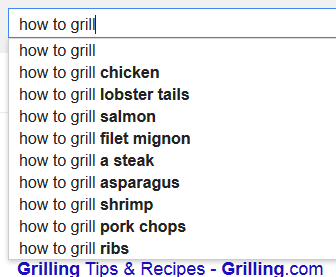
Google Auto-Complete for Keyword Discovery
Another example – if you want to cover pilates, you can type in “pilates” in Google, then go back and type in a question word, like “does” or “how”. Use this to discover new articles to write.

Keyword Discovery with Question Words
If you want to dig even deeper so you can compare search volumes for different keyword sets, you can try using Google Adwords Keyword Planner.
Here, I’m getting keyword ideas for “grilling” and “how to grill” and I added “how to” in the Include Terms box so that I only see keyword ideas that have “how to” in them.
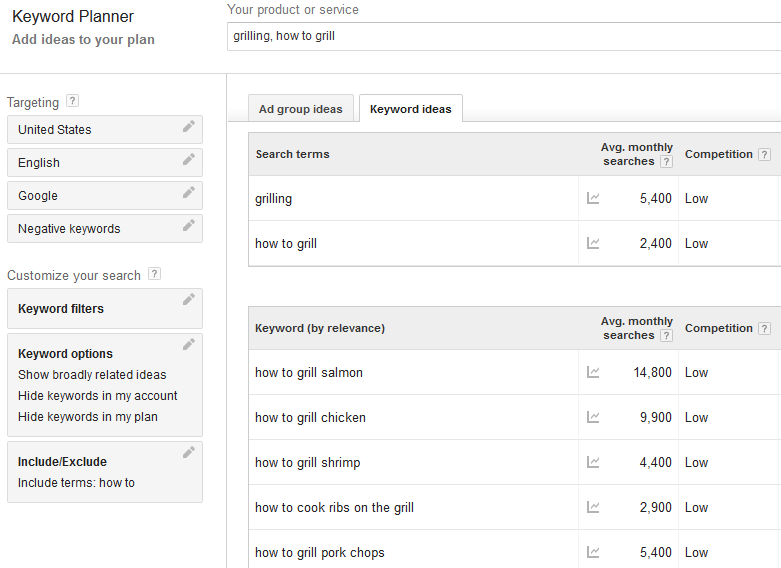
Keyword Discovery with Adwords Keyword Planner
Quality Over Quantity
I mentioned above the importance of quality over quantity, but it’s important enough to go into detail here as your blog could rise or fall with quality.
Length of article, time spent on the article, the article’s readability, the actual CONTENT – these are all part of the picture when looking at the quality of a piece of content. Here’s what I like to tell people…
Say you’re wanting to cover How to Grill a Steak…

Source: steak-enthusiast.com
1) Go search Google for “how to grill a steak”.
2) Look at the top 5 articles that come up.
3) Beat them.
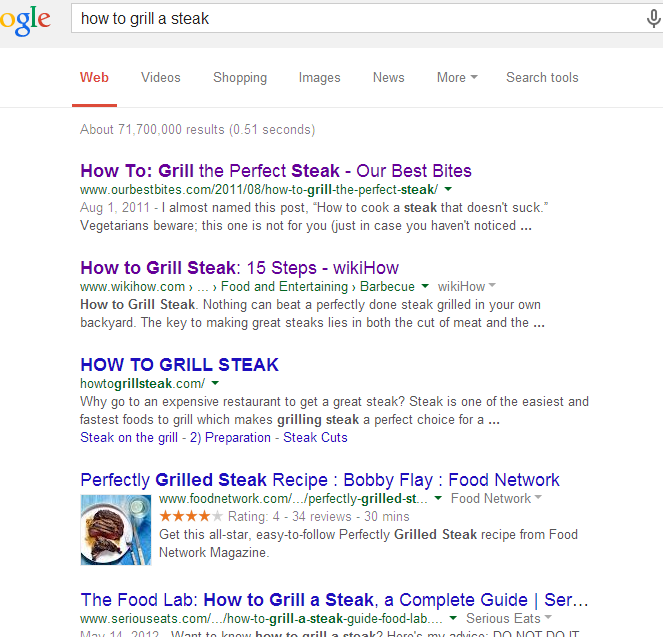
Top Articles in Search Results
I tell clients to make the best article on the internet for the particular topic being covered. I understand that there are some amazing articles on various topics, but it’s really not that difficult to surpass them.
Go through those top articles you found, make notes on what you liked about them, and figure out pieces of information they missed, how the layout could be improved, etc.
To make a piece that’s top-notch, one that beats out all the other articles on the given topic, you may need to spend a good 5 hours on it. Gasp! You WILL be rewarded for that extra effort.
Add Relevant Links
As you’re creating your content and doing your research, you’re likely to come across some great complementary content. If this content is helpful to the users reading your article, link out to that content. Don’t be scared of pointing someone away from your site. If it truly adds value, then you are only enhancing your article.
Also, you want to be looking for opportunities to cross-link with your other content. This is great for SEO. When relevant, link to other articles you’ve written within the body of the post. If you are an e-commerce site, link to a product or category page.
Example: I don’t always grill steaks, but when I do, I prefer my licensed to grill apron.
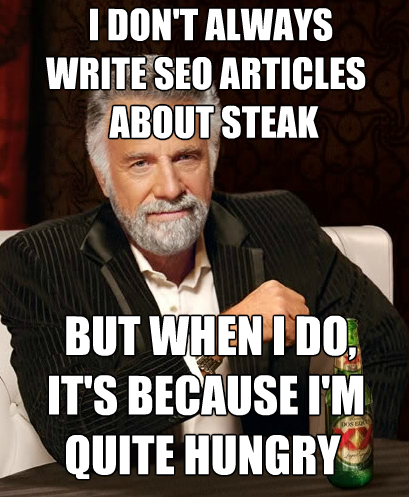
Engage Your Audience
Encouraging people to comment and discuss can greatly increase the SEO of your blog. End your blog posts with a question, so users feel encouraged to leave comments. And when they do, it’s very important to respond, even if they’re not asking a question. Let them know their feedback is appreciated. Encourage and Engage.
Don’t be like Ron Swanson…

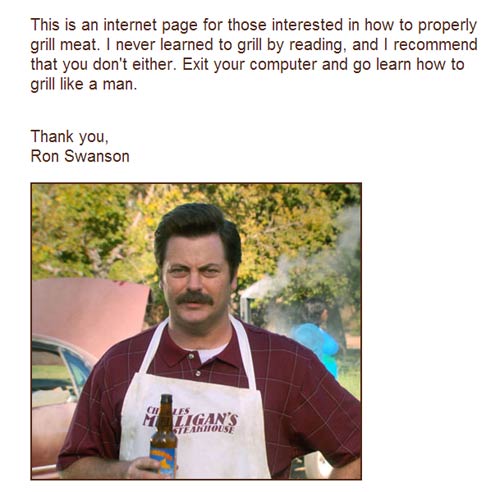
Source: http://www.ronswansongrill.com/
Keywords and SEO Structure
Writing Titles for SEO
It’s important to write naturally and think about the content and your users first and foremost. That said, it’s important to strategically add your keywords to your articles as well.
Most of the time, the Title of your post will become big bold text at the top of the page. Not only that, but it is usually added to the beginning of your Page Title tag, which is what will show up in the search results.
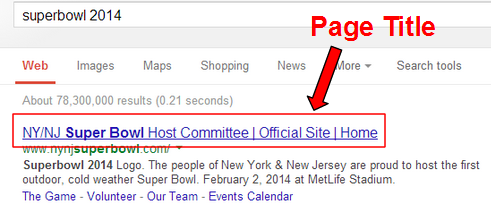
Page Title in Search Results
Since the Page Title is so important for SEO, you want to make sure to 1) use keywords, 2) make it as enticing as possible, 3) keep under 65 characters, and 4) stay away from cutesy, clever titles as much as possible.
For instance, making your title…
“Grillin’ like a Villain – Love me Some Steak!”
is far inferior to…
“How to Grill the Perfect Steak – GrillHouse.com”
That second one is very enticing to click on in the search results and will be more likely to show up higher because of the keyword usage.
One of the worse things you can do is create a non-descriptive Post Title. For instance, the Title of this is simply “December Blog” – yikes!
Bad Blog Title

Bad Blog Title
Further Reading: Here’s a fairly thorough post I wrote on writing Page Titles for SEO.
Write Unique Meta Descriptions
Meta descriptions are the snippet of text that appear in the search results. They do NOT directly effect SEO rankings. However, they can increase the click through rates in the search results.
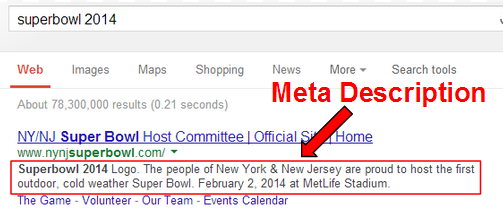
Meta Descriptions in Search Results
Write unique meta descriptions that describe the content and try and keep them between 150 – 160 characters, including spaces.
If you install the Yoast SEO WordPress Plugin, then you can easily control both the Page Titles and the Meta Descriptions for each of your posts. It also lets you know your character count for each.
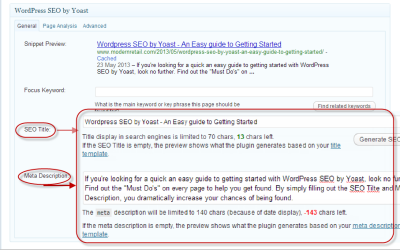
Yoast SEO Plugin
Optimize your Images
Optimizing the images in your posts helps build traffic, not only from the regular search results, but also in Google Image results.
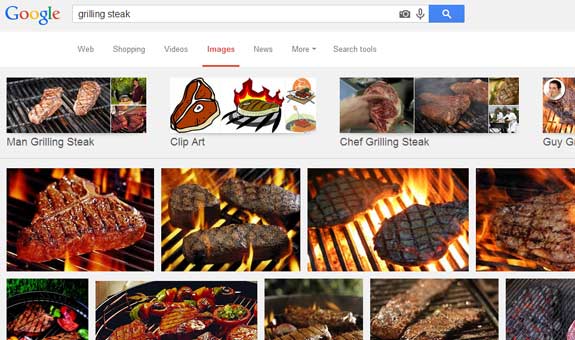
Google Image Search Results
To optimize your images for search and reiterate the topic your covering with keyword usage, you want to use keywords in your file name and alt text (alt text can easily be added when you’re uploading an image to a post in WordPress).
Note: Don’t go overboard here and simply stuff keywords that don’t belong. Simply describe your image.
For example, here’s what I’d make the alt text and file name for this image…
File Name: “grilling-steak.jpg”
Alt Text: “Grilling Steak”

Source: kdmagazine.com
TIP: Other people will search google images for use in their own articles. If your images come up and they use them, they’ll often times link to you, which is great for SEO!
One last thing I wanted to mention about image optimization is to use your own images whenever possible. This isn’t something that gets a lot of discussion, but I usually recommend that people use their own image whenever possible. I feel that this is rewarded in Google’s eyes, as opposed to always using stock images you find online.
BTW – whenever you use someone else’s images, it’s always a good idea to give them credit, by mentioning them as the source. 🙂
Optimize Readability
Readability can certainly effect the SEO of your pages. If I come to your webpage and don’t like what I see, I’m more likely to go back to the search engine and look for something else. This is called “pogo-sticking” and can certainly be detrimental to your rankings.
Me, leaving your site because your wall of text is frightening

Source: bluefountainmedia.com
When you’re structuring your content, use headings, sub-headings, bold things when it makes sense, make good use of spacing, use a big enough font size, and make good use of images so that it doesn’t look like a research paper.
We live in an A.D.D. world – people don’t want to won’t read every single word you write. That’s why you need to make the content easily digestible. Oftentimes I will scan quickly and only read the parts that interest me.
Make good use of images, spacing, and sub-headings.
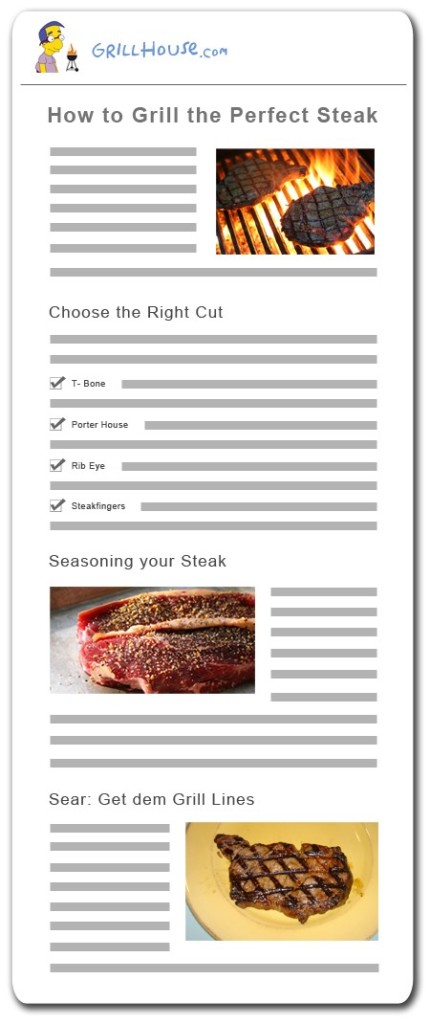
Add Authorship Markup
UPDATE 11/2/14 – AS OF AUGUST OF 2014, GOOGLE HAS COMPLETELY DROPPED ALL GOOGLE AUTHORSHIP FUNCTIONALITY.
Setting up and validating your Google Authorship Markup will allow your image to appear alongside your articles in the search results. This can increase the search traffic to your blog by increasing the click through rates of your pages.

Authorship in Search Results
Here you can find instructions on how to set this up – http://blog.kissmetrics.com/google-authorship/
When you have it set up, you can immediately test it by going to Google’s Structured Data Testing Tool. Just enter the URL of a post and it will show you if authorship is working.
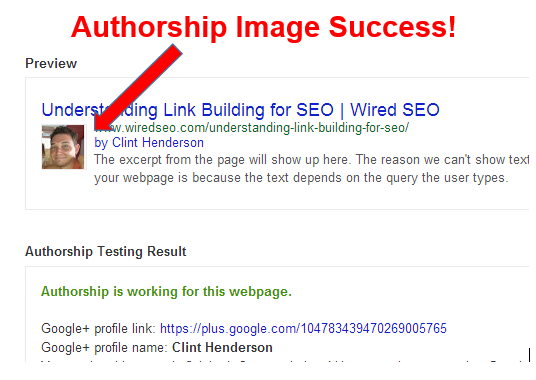
Test Authorship in Google Structured Data Tool
Clean Indexation
One common SEO issue for blogs are that many “thin content” pages end up getting indexed by Google. I don’t want to go into too much detail here, so I’ll just give a brief example.
I discovered 1,260 thin pages from grillingwithrich.com that should not be indexed in the search engines. This kind of “index bloat” can certainly be detrimental to the SEO of your blog.
1,260 thin pages indexed in Google
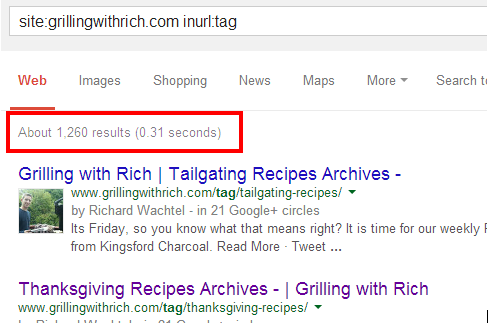
Thin Content Pages Indexed in Google
These tag pages are very common in WordPress and other blog platforms. The solution for this is fairly simple. There are settings in the Yoast SEO plugin that allow you to add what’s known as a meta NOINDEX to these Tag pages (or any set of pages). This will stop those pages from getting indexed, reducing the number of thin content pages in the search results.
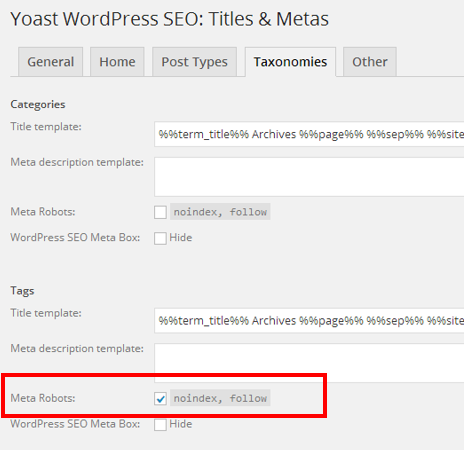
Meta NOINDEX for Tag Pages
Leverage on Social Media
In order to get more social shares and links, it’s important to establish a social media presence either on Twitter, Google+, Facebook, Pinterest, LinkedIn or some other channel. If you aren’t actively using one of these channels, start now. If you have limited resources, pick one channel and focus on that for a while to establish some sort of relevant following.
Sticking with the grilling theme, check out the Kingsford Facebook page – they have 147,000 Likes, making it very easy for them to share their content with tons of grilling enthusiasts very quickly.
There were a few aspects of blogging and SEO here that I left out. These are just the most important aspects that I always stress to clients right off the bat.
I’ll be expanding on some of the items mentioned above in other posts so make sure you subscribe!
If you have any questions regarding small business blogs and SEO please comment below and I’ll be happy to address.
Clint Henderson
Latest posts by Clint Henderson (see all)
- How to Score Content Quality for Improved SEO Rankings (CQ Scoring) - September 8, 2017
- 2017 Mobile Marketing Statistics (Trends, Predictions, & Mobile Strategy) - April 1, 2017
- Ecommerce SEO for Product Pages (17-Step Guide) - January 27, 2017
Related Articles
 April 22, 2014 39 SEO Tips for Small Business Owners
April 22, 2014 39 SEO Tips for Small Business Owners October 17, 2013 How to Write Page Titles for SEO
October 17, 2013 How to Write Page Titles for SEO September 8, 2013 Increasing Organic Traffic 82% in One Day with Only On-Page SEO
September 8, 2013 Increasing Organic Traffic 82% in One Day with Only On-Page SEO September 5, 2016 Structuring a Service Page: Building Blocks for SEO Success
September 5, 2016 Structuring a Service Page: Building Blocks for SEO Success February 25, 2014 Understanding Link Building for SEO
February 25, 2014 Understanding Link Building for SEO
Trackbacks & Pingbacks
[…] Read more on small business blogging for SEO. […]
SEO Services
Wired SEO Company
Fort Worth Office

Wired SEO Company
Address:
Fort Worth, TX 76117
Website: www.wiredseo.com


















What a post Clint! LOL on #2, the bad blog. Get taken seriously by publishing a fresh looking, content rich blog. Separate yourself from the small business competition. Thanks! Tweeted!
Thanks Ryan! If done correctly, you can certainly separate yourself the competition and potentially become a go-to resource for users in your niche.
Is it compulsory to use your Real Name for Google Authorship?
Can’t we use names like Mr.Banks , PureGeek etc
That’s a good question. If you look at the pic I used above to show Authorship, you can see that person’s name displayed as “Meathead” — you could argue that that’s his real name, which would be cool, but I’m leaning towards no.
So, I think as long as your profiles match and you have something filled in the First Name and Last Name, it should work.
Great well thought out post. One thing i would add is try and not create blog posts for SEO. Instead create them to answer your customers questions. As I believe this is what Google is looking for.
Thanks Kevin!
Thinking of your customers needs first and foremost is a great approach – and that’s what Google will tell you.
Instead of writing FOR SEO – it’s important to do your research and leverage keywords where you can in order to pull in NEW customers.
Very Well Said! You such shared very informative and valuable tips with us. SEO is the best way to increase traffic towards our website and to be popular on the search engines. I’ll definitely try these ideas to do blogging for SEO. Thanks!
SEO professionals are experts in the field of optimization. They will evaluate and optimize your website to guarantee that it performs properly. An SEO professional will examine your website to ensure everything is operating well, from how visitors discover you to how quickly pages load, similar to how a mechanic tunes up a car to improve gas efficiency or a nutritionist ensures you’re eating in harmony with your nutritional demands.